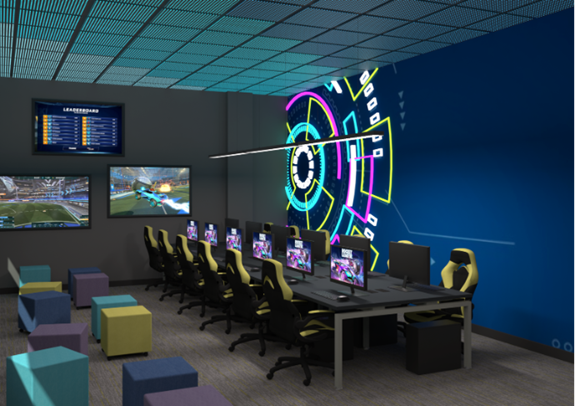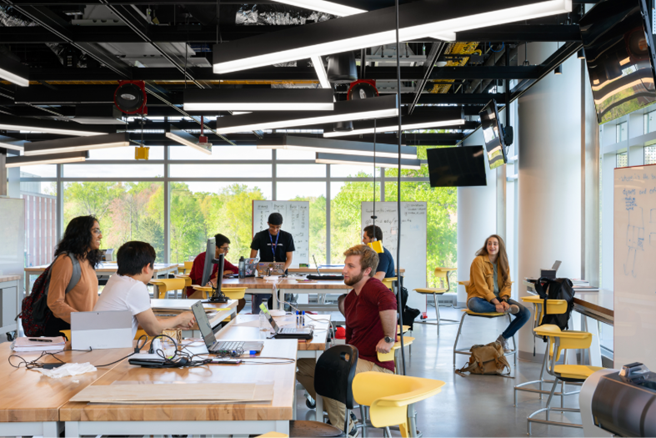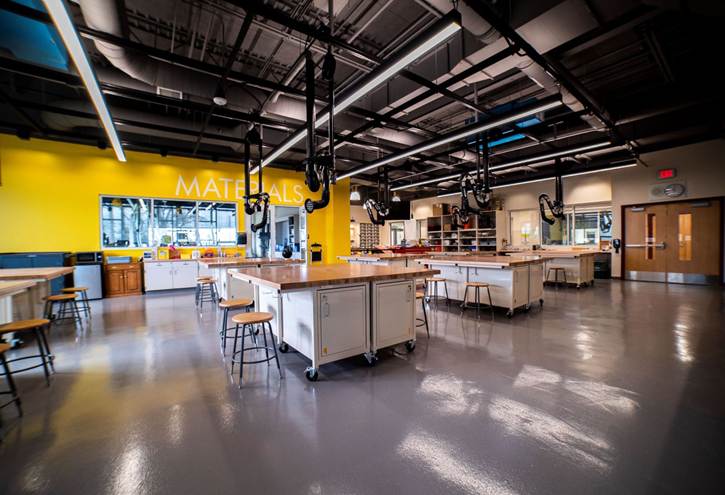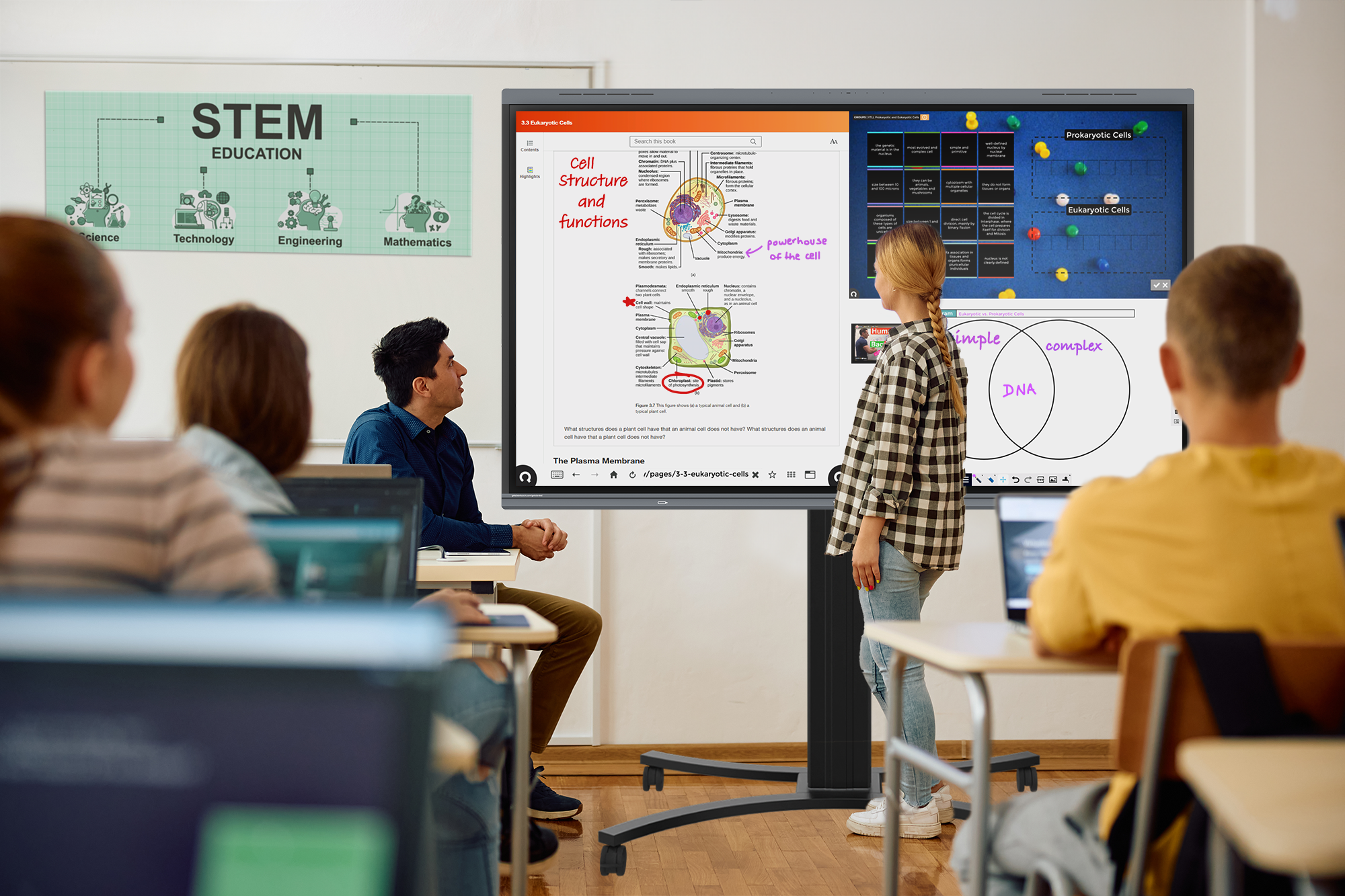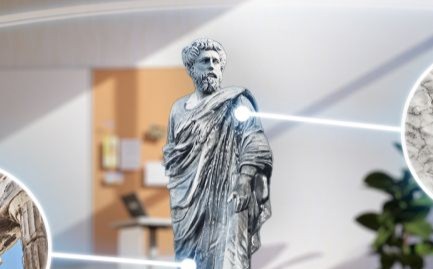Artificial Intelligence (AI) in the Modern Classroom
NJ is investing in AI-focused programs and expanding CTE and computer science courses so students gain real-world, in-demand skills. More high schools are now offering cybersecurity, robotics, and coding programs (source). Schools need adaptable learning environments and proper training in AI that support hands-on coding, robotics, and cybersecurity education. Flexible, tech-ready classrooms allow educators to innovate while preparing students for college and career success.
How can AI be properly incorporated into the classroom?
Artificial intelligence has been used in the classroom for years, from search engines like Google to management systems such as Canvas (https://www.apa.org/monitor/2025/01/trends-classrooms-artificial-intelligence). Generative AI however is a newer form of artificial intelligence that educators and students are continuing to learn how to navigate. With powerful generative tools such as ChatGPT, students are able to generate homework answers and essays within seconds, even with an option to personalize the tone of the generated answers. In response to Gov. Murphy’s call for New Jersey to establish itself as “a pioneering state for artificial intelligence-powered innovations,” the NJDOE is dedicated to ensuring that educators understand how to navigate and manage AI. So, how can one properly incorporate it into the classroom?
- Create an AI policy / guidelines: To maintain integrity and work ethic, students must be given boundaries for how and when to use AI. Having a specific AI policy helps mitigate cheating and set clear boundaries for when AI use in the classroom is and is not appropriate. For example, in a coding class, students may be allowed to use AI to help explore different solutions to a problem, but not to submit the actual AI-generated code as their final project. Setting up these guidelines provides an opportunity to incorporate technology into a lesson while still ensuring that each student’s work is his or her own.
- Provide training: To use AI properly and fully understand its capabilities, teachers should receive training on a variety of AI tools and applications. Training teachers on these platforms not only empowers educators to use AI as an aid, but it also provides ideas for differentiated activities and lessons. NJDOE created a comprehensive webinar which provides an overview of AI and related concepts and uses, as well as discussion questions about AI in the classroom.
- Teach digital citizenship: When integrating AI into courses such as cybersecurity, robotics, and coding, it’s essential to have a conversation with students around the ethics of artificial intelligence. Discussions should cover important topics such as data privacy, algorithmic bias, intellectual property, and responsible coding practices. These important conversations help inform students on how AI responses can be helpful but require ethical consideration and technical scrutiny.
A Setting for Success
As outlined in NJDOE professional standards for teachers, schools in the New Jersey area are being encouraged to implement flexible learning environments. Adaptable, tech-ready classrooms encourage student innovation and creativity, while taking some of the extra work off of teachers.
Flexible furniture makes it easy for students to pair up or be placed into small groups for mentoring and collaboration. In courses like computer science, teachers can easily reconfigure the classroom to group students based on their achievement levels and individual needs. AI can work hand-in-hand with the flexible layout, managing diverse student needs by offering enrichment to advanced learners, and providing support to those who need help, requiring less one-on-one intervention from the teacher.
Not only do flexible learning environments and AI integration help with differentiated learning, but they also promote collaboration. Courses such as robotics and coding require students to work in teams to build, test, and iterate. Having easily reconfigurable furniture allows students to rearrange the space to best suit their workflow. Teachers can also set up zones or work stations for different phases of a project, giving them the freedom to decide which zones of the room can be tech-enabled and which ones should remain AI free.
AI continues to transform the classroom and the ways students learn. By creating classrooms that support tech-integration and flexible learning, educators can not only create a more collaborative and successful learning environment for students, but they can also utilize AI to lighten their workloads.
Curious about creating a space designed for flexibility and AI integration? Contact us today.
